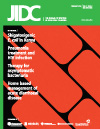Bangladeshi backyard poultry raisers’ perceptions and practices related to zoonotic transmission of avian influenza
DOI:
https://doi.org/10.3855/jidc.2242Keywords:
backyard raisers, poultry, qualitative research, avian influenza, perception, BangladeshAbstract
Introduction: Highly pathogenic avian influenza (H5N1) virus (known as "bird flu") is an important public health concern due to its potential to infect humans and cause a human pandemic. Bangladesh is a high-risk country for an influenza pandemic because of its dense human population, widespread backyard poultry raising, and endemic H5N1 infection in poultry. Understanding poultry raisers' perceived risks and identifying their risk exposures can help to develop interventions to reduce the risk of avian influenza transmission. This paper explores the perception of Bangladeshi backyard poultry raisers regarding poultry sickness and zoonotic disease transmission and relevant practices.
Methodology: We conducted a qualitative study using social mapping (n=2), in-depth interviews (n=40), household mapping (n=40) and observation (n=16), in two backyard poultry-raising communities.
Results: The poultry raisers recognized various signs of poultry illness but they did not distinguish among diseases using biomedical classifications. They perceived disease transmission from poultry to poultry, but not from poultry to humans. They usually kept sick poultry under the bed. If the poultry did not recover, they were slaughtered and consumed or sold. The poultry raisers had close contact with sick birds while handling and slaughtering poultry.
Conclusions: The poultry raisers are unlikely to follow instructions from health authorities to prevent "bird flu" transmission because many of the instructions ask low-income producers to change their existing practices and require time, money, and financial loss. Villagers are more likely to comply with interventions that help to protect their flocks and address their financial interest.
Downloads
Published
How to Cite
Issue
Section
License
Authors who publish with this journal agree to the following terms:
- Authors retain copyright and grant the journal right of first publication with the work simultaneously licensed under a Creative Commons Attribution License that allows others to share the work with an acknowledgement of the work's authorship and initial publication in this journal.
- Authors are able to enter into separate, additional contractual arrangements for the non-exclusive distribution of the journal's published version of the work (e.g., post it to an institutional repository or publish it in a book), with an acknowledgement of its initial publication in this journal.
- Authors are permitted and encouraged to post their work online (e.g., in institutional repositories or on their website) prior to and during the submission process, as it can lead to productive exchanges, as well as earlier and greater citation of published work (See The Effect of Open Access).








